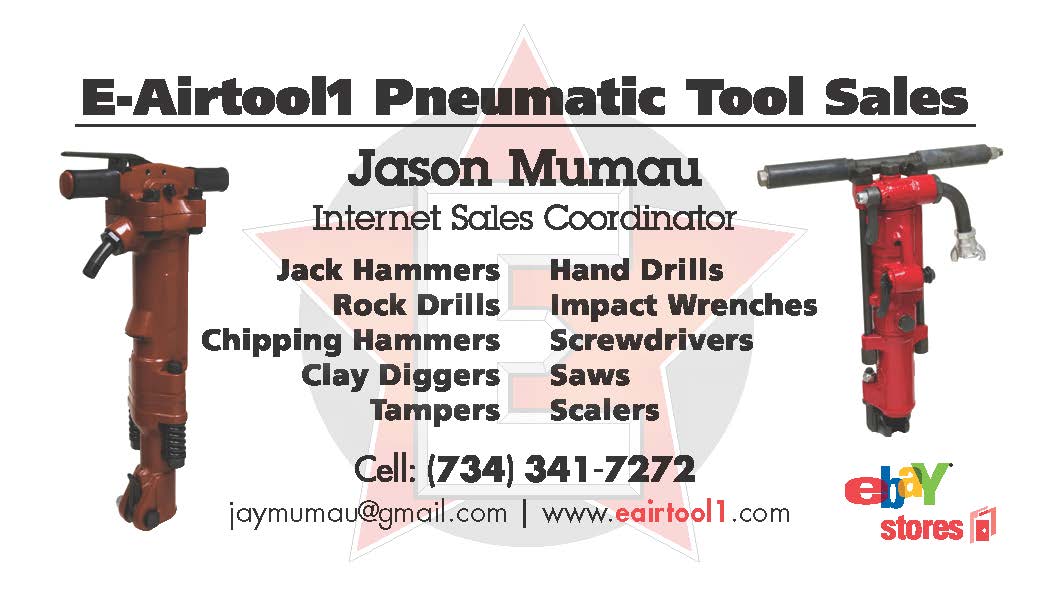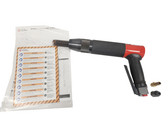 Loading... Please wait...
Loading... Please wait...- Home
- Air Tools in General & Lubrication
Categories
Air Tools in General & Lubrication
Air Tools in General & Lubrication
Air Tools in General
Air tools in general are stronger tools than electric tools and consist of fewer parts allowing them to last longer with less “break downs” and less parts to go wrong with them. They are less mess when repairing them compared to hydraulic tools. Cfm ratings are important to know of each tool since they will depend on the right size compressor to run them properly at their peak performance. Almost all air tools should be consistently run at 90 Psi and your compressor should have enough Cfm output at 90 psi to run your tool. Typically a “two stage compressor” should be used to keep you from having to wait for the compressor to fill back up after using your tool for only a few minutes. Common air compressors used to run construction tools especially multiple ones at the same time should be “pull-behind” compressors which can be hooked up to the hitch of a vehicle and pulled near the job site you will be working at. The farther your tool operates from your compressor the less efficient it will become. Too much air pressure can cause your tool to freeze up and quit working also so be sure to regulate your air pressure.
Air Tool Lubrication
All air tools should be used with “air tool oil” and not motor oil. Some manuals for older generation tools say that kerosene can be used as a substitute but mostly today air tool oil is used. Air tool oil is similar to very thin oil and has the feel of almost watered down oil. All air tools should have their air inlets protected from debris. Debris that gets into the air inlet of a tool is the most common reason for a tool breaking down or parts wearing out faster than their normal life span. The second most common reason an air tool will break down or quit working is lack of oil.
In-Line Oilers or Lubricators are an excellent choice for keeping your air tools lubricated properly. An in-line oiler looks like a small football generally cast out of aluminum. They come in various sizes for different size tools. Each one has a threaded port on each end. Some are ½” and others are ¾” or 1” threaded ports to allow you to place this on your air line approximately 6 to 10 feet from your tool. ½” ported lubricators are used with pneumatic hand tools, chipping hammers, air hammers, and scalers. ¾” ported or larger are used for Jack Hammers, Tampers, Clay Diggers, and other larger size pneumatic tools. They have a site glass on the side and a fill cap to fill them with oil. They are factory set from the manufacturer to automatically disperse oil with the air traveling through your line to consistently lubricate your tool during operation although they generally have a small flat head adjustment screw inside underneath the fill cap if it needs adjusted. If you do not have an inline oiler you should at least put a few drops in the air inlet before running any hand tool and a small squirt in the air line.
734-341-7272 Jay
New Products


















